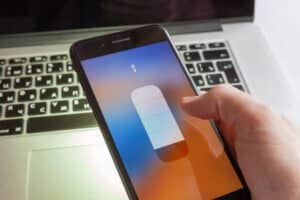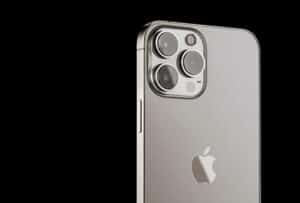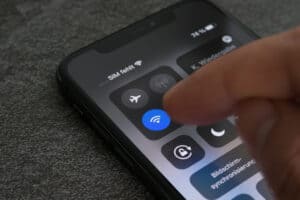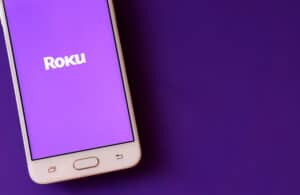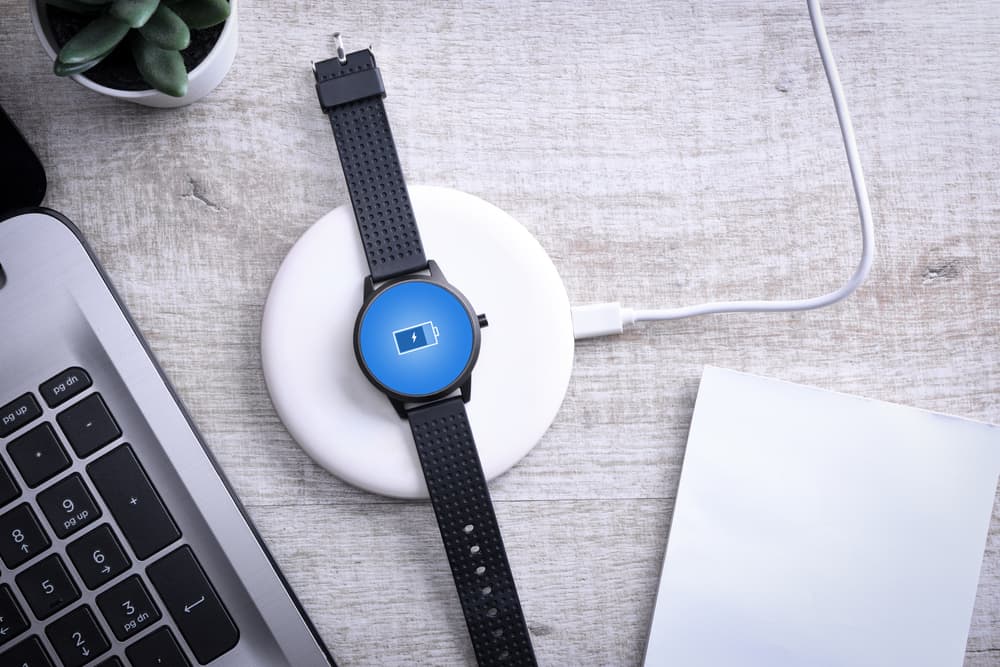
The battery life of smartwatches can last from a few hours to some weeks at max. Eventually, you’ll need to recharge the tiny Lithium-ion batteries present inside. However, there are multiple ways concocted by each brand to charge a smartwatch.
Currently, there are five different methods to charge a smartwatch. They are:
1) Using the wireless magnetic charger.
2) Using a conventional wireless charger.
3) Charging with a clip-on charger.
4) Using Wireless Powershare from your phone.
5) Using solar energy on the Garmin Instinct Solar.
While it may seem extremely simple, having multiple methods to charge your smartwatch can seem confusing for most.
This article will explore all the different methods and technologies brands like Apple, Samsung, Fitbit, and Garmin have used to charge a smartwatch.
Method #1: Using the Wireless Magnetic Charger
Brands like Apple, Samsung, and Amazfit have resorted to magnetic wireless charging for their smartwatches. This allows them to save space on the body of the device as they don’t have to make their way for an opening.
Plus, another added advantage comes into play with waterproofing. With no opening except for the speakers and microphone, it is much easier for companies to add 5 ATM+ water insulation to their smartwatches.
However, when you win some, you do lose some. In this case, the inclusion of a proprietary charging mechanism means that you won’t be able to plug your smartwatch in everywhere.
Here’s how you can use a wireless magnetic charger to charge your smartwatch:
- First, plug your magnetic wireless charger into a compatible socket.
- Next, place your smartwatch right on the magnetic wireless charger.
- If done correctly, your watch will snap onto the charger and begin charging.

If your smartwatch does not seem to be charging even after making sure there’s power in the charger, clean the contacts present under your watch.
Method #2: Using a Wireless Charger
Any smartwatch operated on a magnetic wireless charger can also be charged using a conventional wireless charger. There will be no loss of charging speed or power efficiency, given that your socket is at the right voltage.
Generally, if you’ve lost your smartwatch’s charger or aren’t in the mood to travel with one constantly, packing up the same wireless charger that you use for your phone will do the trick.
Here’s how you can use a wireless charger to charge your smartwatch:
- Plug your wireless charger into an appropriate socket.
- Now, gently place your smartwatch onto the charger.
- If done correctly, your smartwatch will automatically start charging.

If you have a faster wireless charger, your smartwatch will still charge at its maximum capacity. So, you won’t be damaging your watch by using one rated for a higher voltage.
Method #3: Using a Clip Charger
If you have ever owned a Fitbit, the chances are that you’ve already affiliated yourself with a clip-on charger quite nicely. Unlike their wireless counterparts, clip-on chargers use a proprietary connection to charge your smartwatch.
The primary advantage of a brand opting for this sort of charging mechanism is that they are easier to produce and therefore cost less if you ever purchase a replacement.
Here’s how you can use a clip-on charger to charge your smartwatch:
- Connect the charging socket to a compatible charger.
- Now, align your watch with the contacts present on the charger.
- After doing so, your watch will start charging automatically.
When opting for this method, make sure your watch is not wet. Otherwise, you might cause irreversible damage. While your watch may be waterproof, coming into contact with electricity while still wet can still lead to a harmful outcome.
Method #4: Using Wireless Powershare
If your watch and phone support wireless charging, you’ll be able to use your phone to charge your smartwatch. This feature is most notably adapted by both Samsung and Huawei. Do note that you will end up draining a lot of your phone’s battery when opting for wireless power share.
Here’s how you can charge your smartwatch through your phone:
- Pull down the notification panel on your phone.
- Tap on “Wireless Powershare.”
- Now, position your device’s back with the contacts present on your smartwatch.
- If done correctly, your watch will start charging.

If Wireless Powershare does not work correctly, it may be because the cover you are using does not support wireless charging. Try removing your phone cover and see if it makes a difference.
Method #5: Using Solar Energy
As apparent, this method only applies to one smartwatch as of now. But, it is still worth mentioning. The Garmin Solar Instinct is the only smartwatch that can be charged using solar energy.
Here’s how you can charge your smartwatch using solar energy:
- When wearing the watch, expose or point it toward the sun or bright source of light.
- Your watch will automatically start charging and harnessing solar energy.
Most other watches don’t charge through solar energy because it generates a very minimal, which is not enough for most smartwatches.
Summary
Charging your smartwatch has never been so simple, especially with the advent of wireless charging. However, some older smartwatches and brands like Fitbit still stick to their old ways and require proprietary cables for you to be able to charge their devices.
Frequently Asked Questions
Yes, you can use a mobile charger to charge your smartwatch. In fact, most smartwatches have the same voltage rating as a typical smartphone, albeit with less power draw. So, you’ll have no qualms with using a mobile charger.
Yes, if you have a phone that supports reverse wireless charging, you don’t need a charger. However, note that this method typically drains your smartwatch battery a lot.

